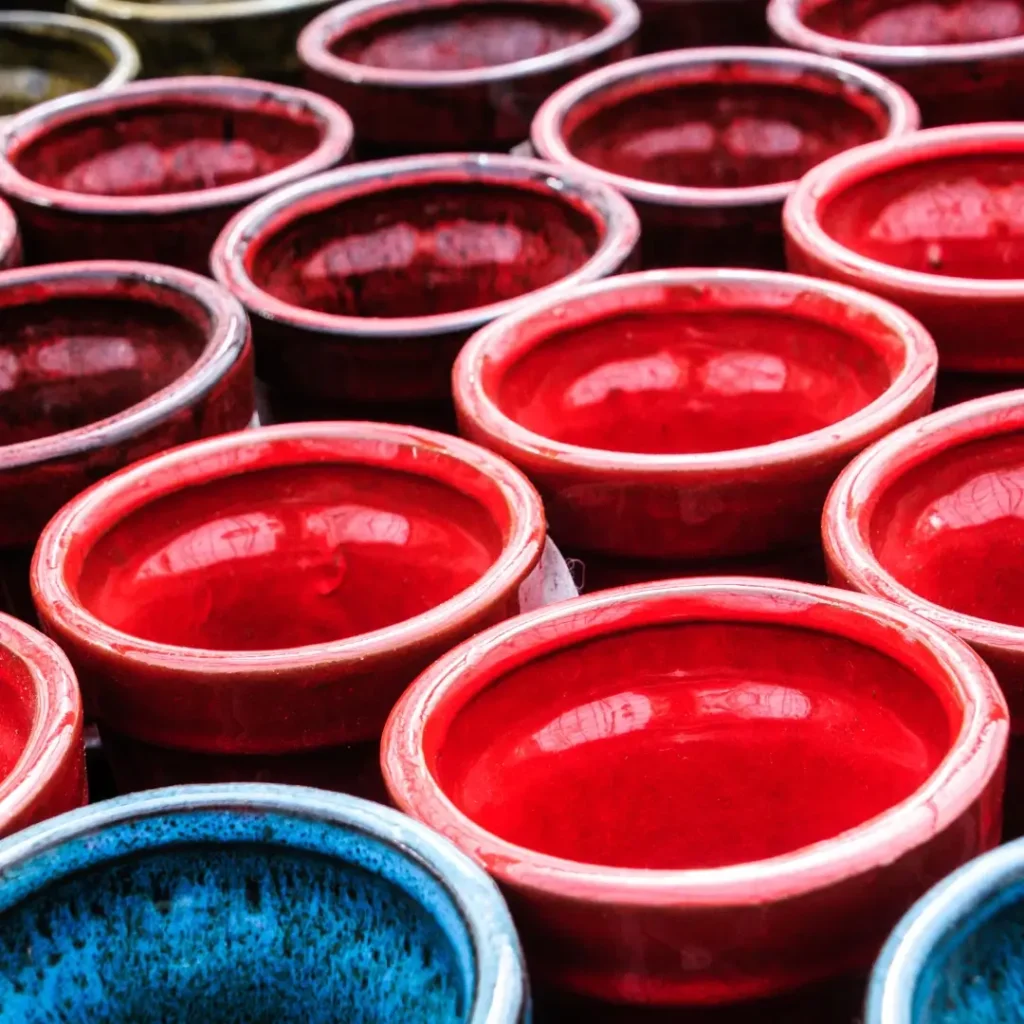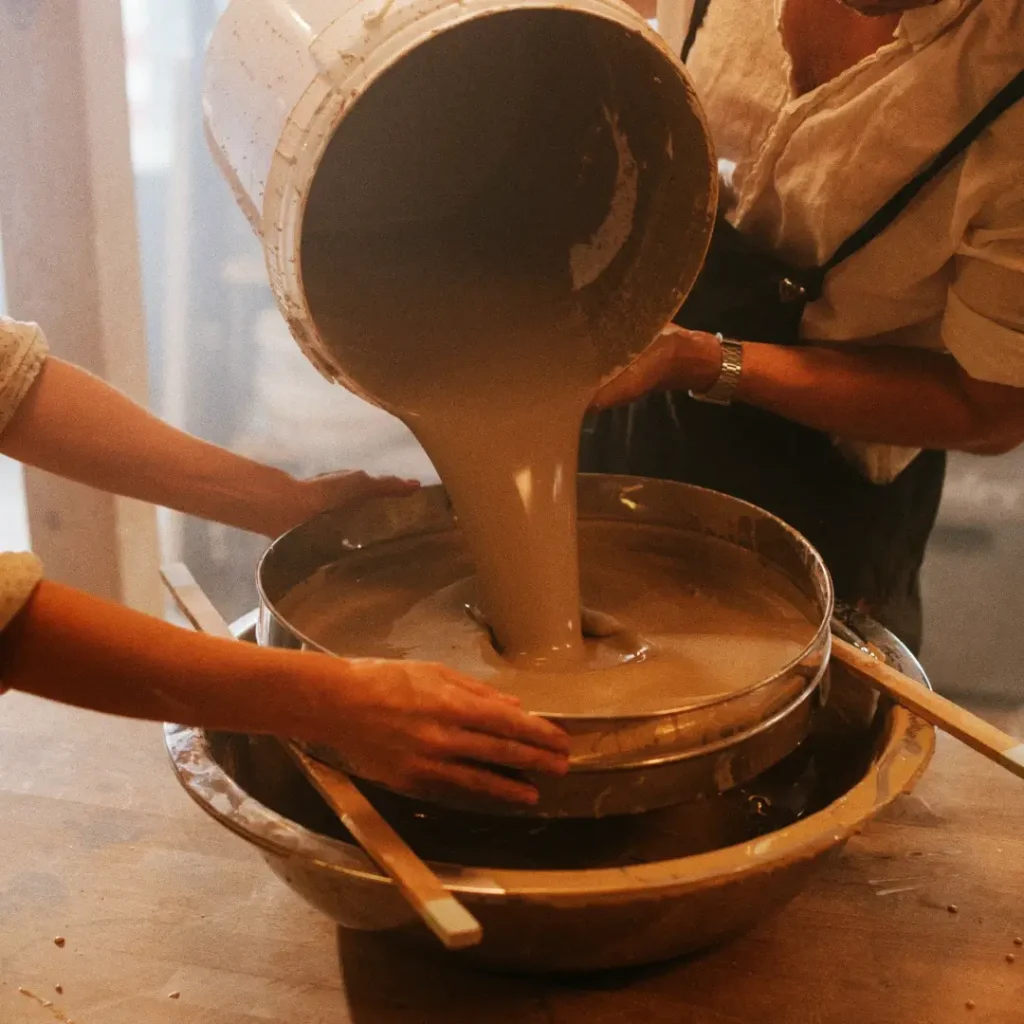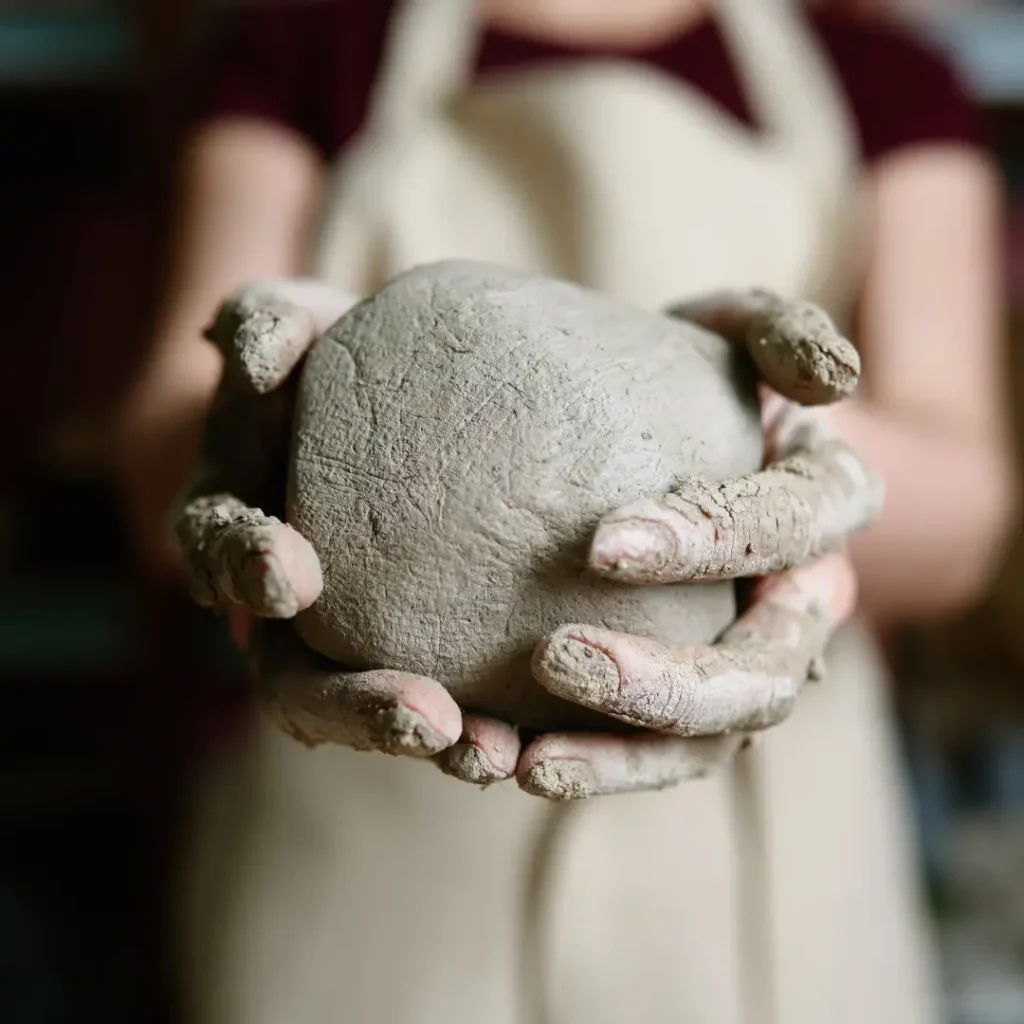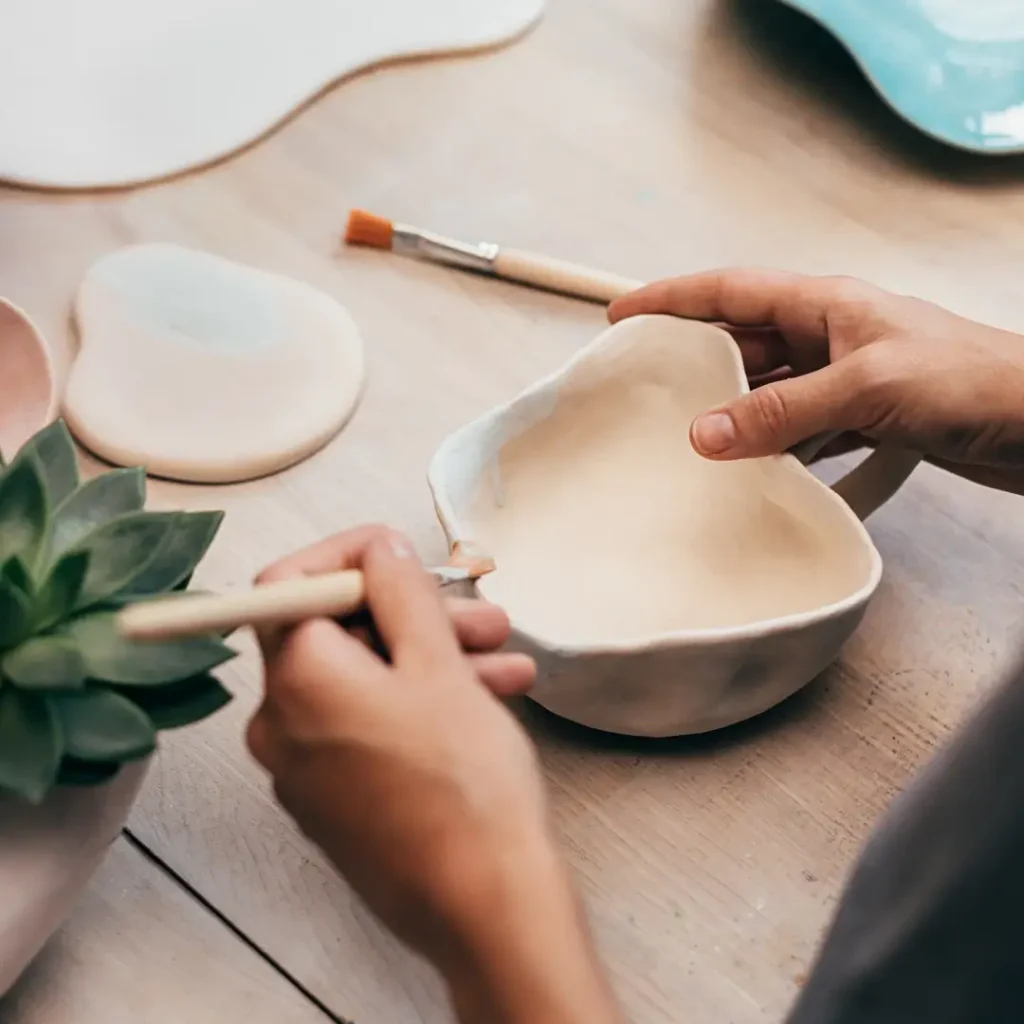Aríbalo: Its presence in Inca and Greek ceramics
A aríbalo is a type of ceramics with a distinctive shape, widely used by cultures such as the inca for storing and transporting liquid.
This piece of pottery, characterized by its narrow base and globular body, stands out for its importance both in daily life and in ceremonies. It was also used in Mediterranean cultures such as the Greeks.
The similarity between some pre-Columbian and Greek pieces, which had no contact whatsoever, is somewhat enigmatic.

The History and Origin of Aríbalo in Ancient Ceramics
The history and origin of aríbalo in ancient ceramics is attributed by many to ancient Greece, where they initially appeared as small spherical or globular vessels with a narrow neck, known for containing perfumes or oils, especially among athletes during bathing.
The name “aríbalo” derives from the Greek word “ἀρύβαλλος” (aryballos), which referred to a specific type of small spherical or globular vessel with a narrow neck, used mainly to contain perfumes or oil.
This particular design evolved from the first pitcher of wine in the geometric style of the ninth century BC, developing its distinctive form in the early proto-Corinthian style of the eighth century BC.
The aríbalo form also emerged in different cultures in other continents, including the Inca, where they adopted a particularly significant form and function. The Inca aríbalos also known as urpus were characterized by large globular chambers, pointed bases and high necks with flared edges, reflecting a fusion of local styles with the Inca empire.
Although we sometimes associate this type of pottery with Andean cultures, the name itself has no roots in the indigenous languages of the region.
The use of the aríbalo by the Inca culture reflects the functional capacity of this type of piece, while acquiring new meanings and uses. This versatility and the historical richness of the aríbalo make it a fascinating testimony of cultural similarity and continuity through the ages.
The enigma of the similarity of the Greek and Inca aríbalo
Actually, the mystery of the similarity between Greek and Inca aríbalos is easy to explain. This term was adopted by the Spaniards, from the influence of Greek and Roman culture in the Iberian Peninsula, and later, during their influence in America, they applied it to Andean ceramic vessels because of their similarity in form and function to the objects they knew in Europe.
It is true that there are pieces that are very similar in shape, but in reality they are more the exception than the rule. The concept is similar, but the shapes differ in many cases between the two civilizations.
This example of nomenclature reflects the phenomenon of transculturation, where the arrival of the Spanish in the Americas brought with it a mixture of traditions, languages and, in this case, terminology. Thus, the aríbalo becomes a symbol of the intersection between two worlds, maintaining its cultural and functional importance within Andean societies, but under a name that evidences the impact of colonization.
Thus, the origin of the name aríbalo is a testament to the rich and often complex history of cultural interactions in South America, from pre-Columbian traditions to the colonial era and beyond.
Traditional uses and functions of aríbalo
In the domestic environment, the aríbalos were mainly used to store and transport essential liquids, such as water, chicha (fermented corn drink) and oils. Its ergonomic design allowed for efficient handling, facilitating the transport of substances between the various Andean altitudes.
From a ceremonial perspective, the aríbalo had a prominent role in the offerings and rituals. The chicha, contained in these vessels, was offered to the gods as part of ceremonies of thanksgiving and requests for favors, reinforcing the spiritual connection between the Incas and their divine pantheon.
In addition to their practical and spiritual use, the aríbalos were symbols of status y power. The possession of finely decorated aríbalos was a privilege of the nobility and the ruling elite, reflecting their social rank and their special relationship with the divine.
Greek aríbalo
The Greek aríbalo represents an essential piece within the rich tradition of the Greek ceramics. This type of container, elaborated by those with great expertise in pottery , was commonly used to store oils and ointments, playing a crucial role in the daily practices and rituals of ancient Greece.
The manufacture of an aríbalo involved a deep knowledge of clay and earthenware craftsmanship, the final result being a testimony to the potter’s skill and artistry. The characteristic shape of the aríbalo, with its rounded body and narrow base, facilitated its handling and preservation of the contents, highlighting functionality combined with aesthetics in Greek pottery.

Buy unique Greek reproductions
Fortunately, there are artisans who make reproductions identical to the classical works of art that were made in ancient Greece and are only found in museums, making them affordable.
The designs and decorations that adorned these vessels offered a vision of the Greek world, its myths, daily life and battles. Such vessels were not mere utilitarian objects; they were miniature canvases that told stories and paid homage to gods and heroes, thus connecting the divine with the earthly.
The exchange of aríbalos between different regions of the ancient Mediterranean also highlights the importance of these objects in trade and cultural relations.
Today, Greek aryballos are preserved as treasures in museums around the world, serving as windows to the past and a source of inspiration for contemporary artists and craftsmen. Their legacy endures not only in the Greek ceramics The influence they had on other pottery traditions, as will be seen in the following sections dedicated to the Inca aríbalo and its presence in various cultures.
The Inca aríbalo
The aríbalo inca or urpus, of elongated and stylized shape, with a narrow neck and a round base, was mainly used to store and transport chicha, a fermented corn drink that played a central role in the social, religious and political life of the Incas.
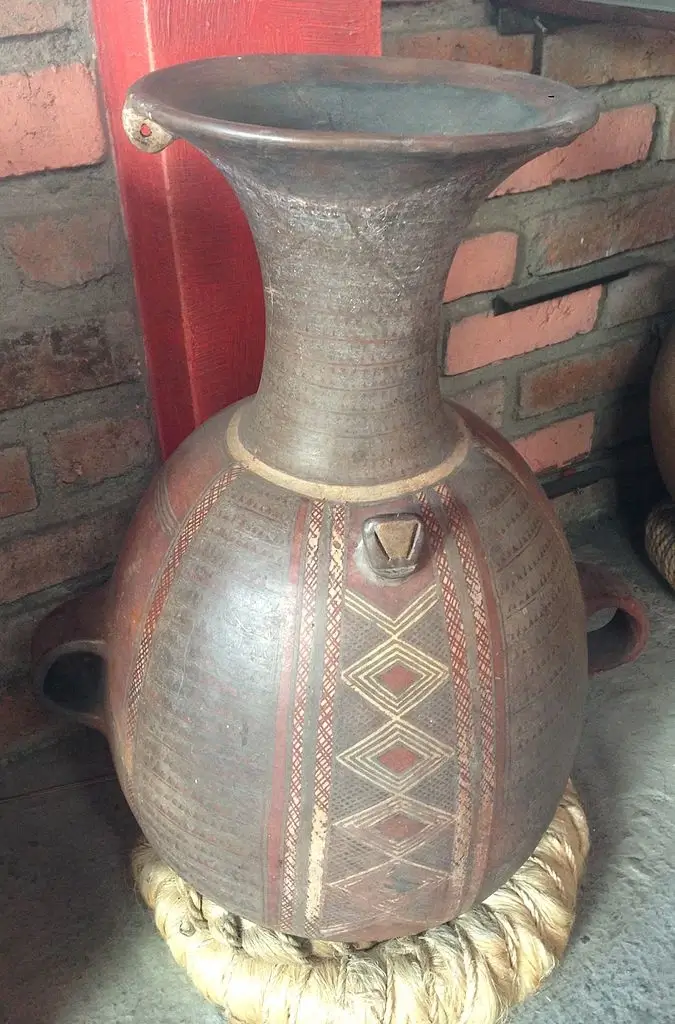
The Inca aríbalos were not merely utilitarian pieces, but also important symbolic and prestige objects. These vessels reflected the status and wealth of their owner, and were often decorated with complex iconographic motifs, including religious symbols and depictions of local fauna and flora. The elaboration of these objects was a highly valued specialization, and the artisans who created them occupied a prominent place in Inca society.
Inca pottery was characterized by its variety of shapes, each of which had a specific purpose, and by the technique of decoration through the application of pigments after firing, which resulted in vivid colors and long-lasting designs. Unlike Greek pottery, which often featured narrative scenes, the decoration of Inca aríbalos tended to be more abstract and symbolic.reflecting the Inca cosmovision and its emphasis on order, duality and harmony.
The use of aríbalos was not limited to the elite, although the most finely crafted and decorated examples were reserved for Inca nobility and royalty. These vessels were used in a variety of contexts, from domestic to ceremonial, and were central elements in the rituals of reciprocity and redistribution that sustained the social and political cohesion of the Inca Empire.
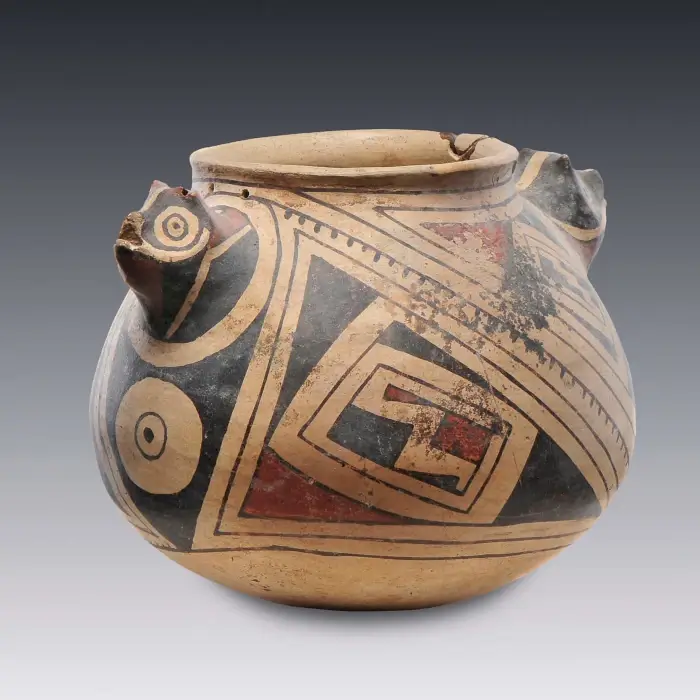
Buy pre-Columbian ceramics
Find original pieces and also reproductions identical to the traditional ceramic works that were made in pre-Columbian America and that are only found in museums, making them affordable.
In addition to its cultural and symbolic importance, the Inca aríbalos are a valuable source of information for archaeologists and historians, as their study offers insights into daily life, religious practices, trade relations and cultural exchanges within the vast Inca empire and between it and its neighbors.
The aríbalo in other cultures
Beyond its prominence in Greek and Inca cultures, this type of jug has had presence and variations in multiple civilizations throughout history. This vessel, fundamental in the practice of storing and transporting liquids, has been adapted to the specific needs, styles and symbolisms of different peoples, reflecting the diversity and richness of pottery traditions around the world.
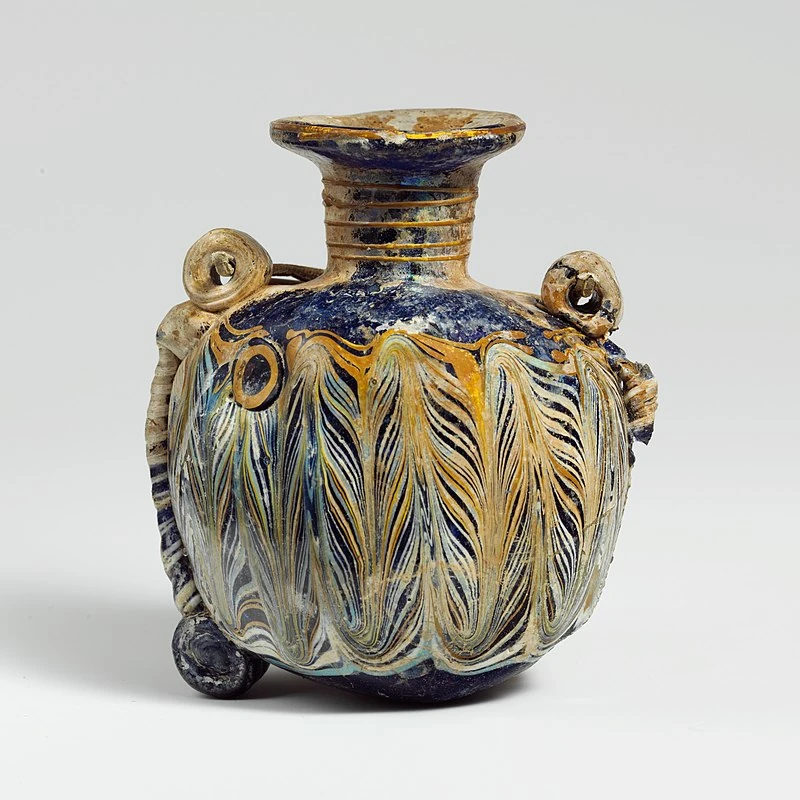
In the Mediterranean, besides the Greeks, other cultures such as the Etruscans also developed aríbalo forms. These Etruscan vessels, while sharing the basic storage function, featured unique decorative styles that reflected their own iconography and mythology.
Motifs on these aríbalos often included scenes from everyday life as well as depictions of deities and mythological creatures, incorporating a distinctive spiritual and cultural dimension.
Further east, in the Near Eastern civilizations, vessels similar to the aríbalo in form and function were found. These cultures, known for their advanced ceramics, used these vessels not only for liquid storage, but also for oils and ointments. The designs here often incorporated geometric and calligraphic patterns, reflecting the artistic and religious influences of the region.
In Africa, pottery traditions varied greatly from region to region, but the concept of the aryballus as a vessel for liquids was found in a variety of forms. In some African cultures, vases were adorned with patterns and textures that reflected the social significance of the object and, often, its link to specific rituals or to the daily life of the community.
In the American continent, apart from the Incas, other pre-Columbian civilizations such as the Maya and Aztecs also developed vessels with similar functions to the aríbalo.
The evolution of the aríbalo in these diverse cultures shows not only the universality of certain basic human needs, such as storing and transporting resources, but also the richness of artistic and symbolic expression of each people. Through the study of these objects, one can better understand the interconnections between the everyday practices, spiritual beliefs and artistic traditions of civilizations throughout history and across the world.
In summary, the aríbalo, in its multiple manifestations across different cultures, not only stands out for its practical utility, but also as a vehicle for the expression of a people’s cultural identity, spirituality and aesthetics.
Latest publications:
